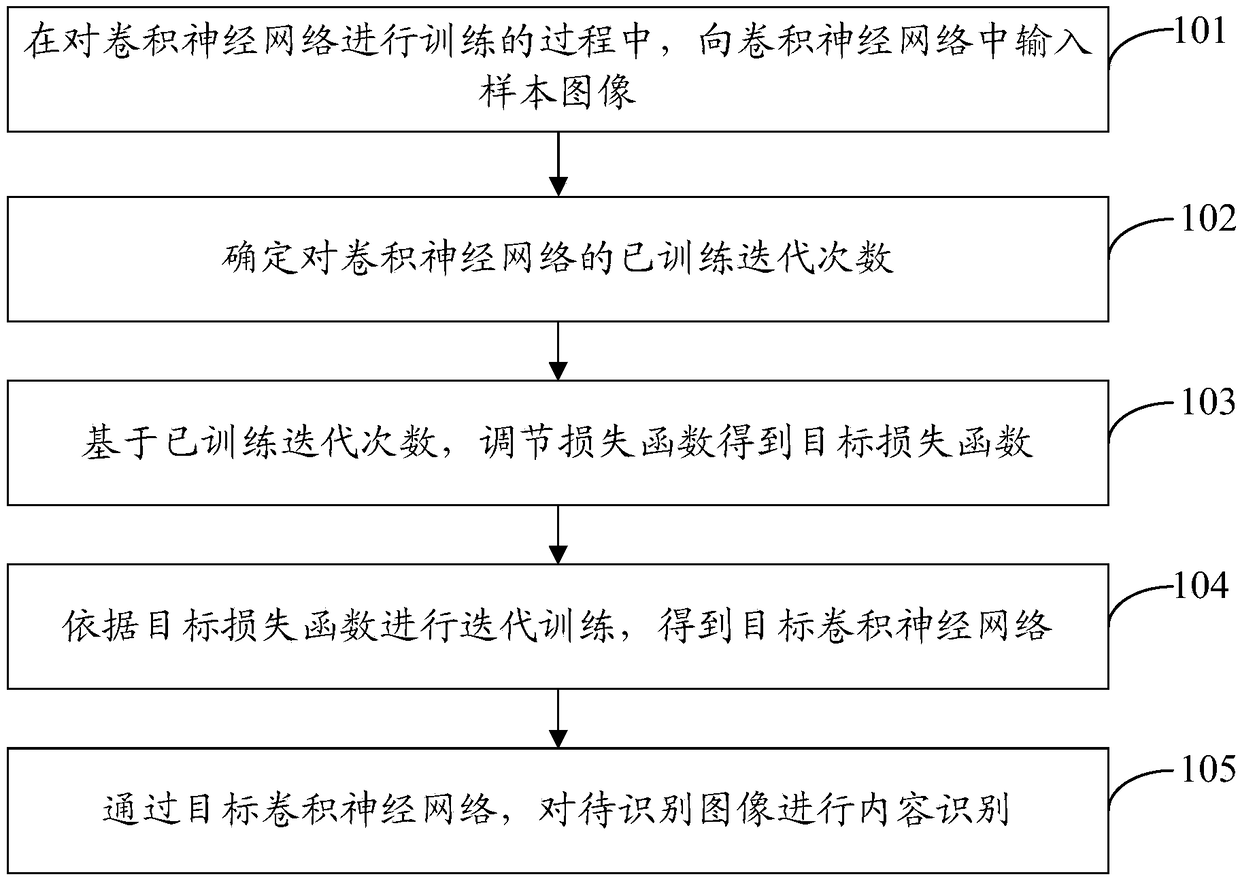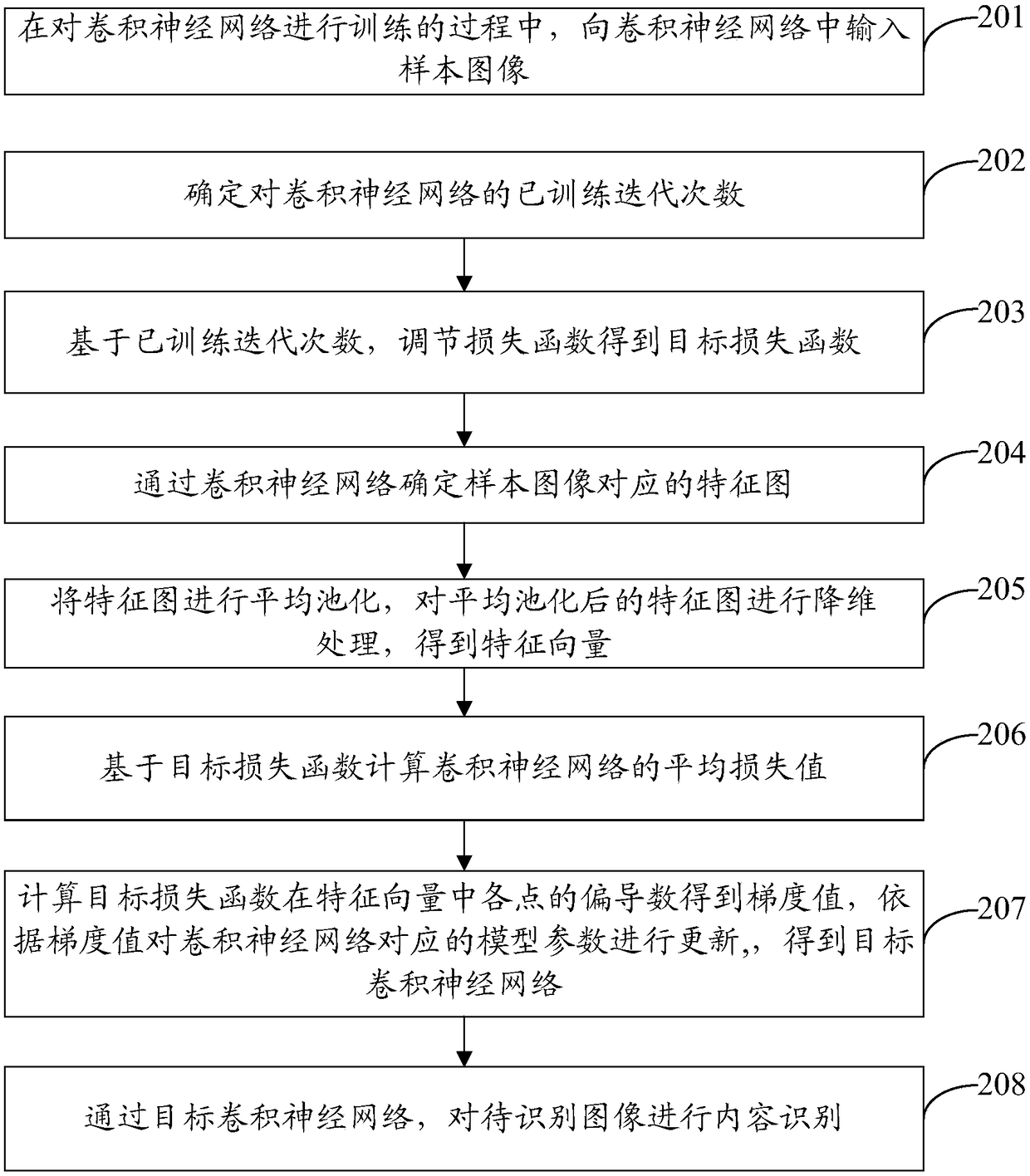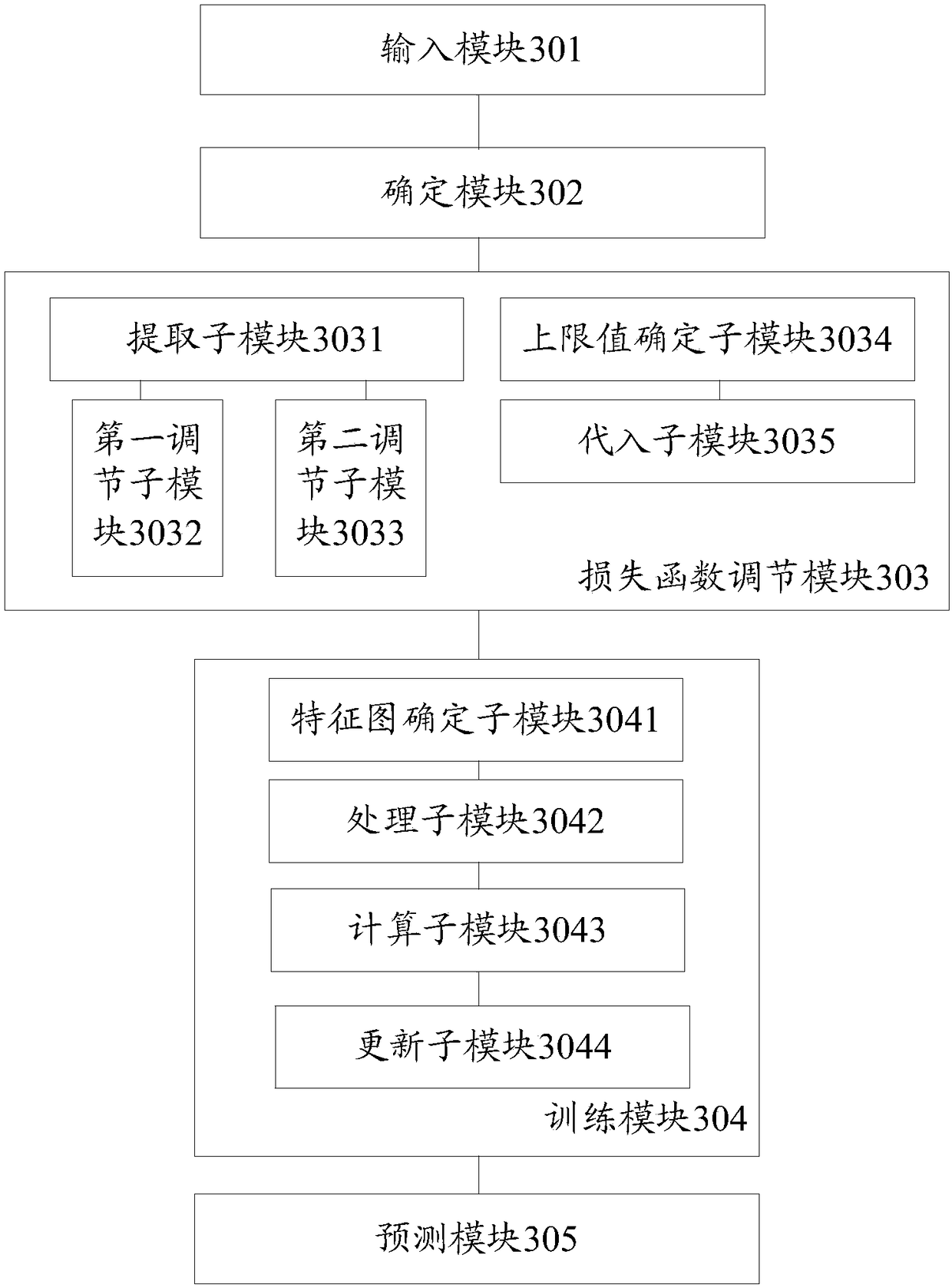Image content identification method and device and terminal
An image content and recognition method technology, applied in the field of image recognition, can solve the problem of inability to take into account the recall rate, and achieve the effect of reducing the number of sample images, ensuring the accuracy rate, and increasing the recall rate
- Summary
- Abstract
- Description
- Claims
- Application Information
AI Technical Summary
Problems solved by technology
Method used
Image
Examples
Embodiment 1
[0033] refer to figure 1 , shows a flow chart of steps of an image content recognition method according to Embodiment 1 of the present invention.
[0034] The image content recognition method of the embodiment of the present invention may include the following steps:
[0035] Step 101: In the process of training the convolutional neural network, input sample images into the convolutional neural network.
[0036] Among them, the sample images are used for iterative training of the convolutional neural network.
[0037] The convolutional neural network in the embodiment of the present invention can be a multi-category content recognition model, which can identify the category to which an image belongs; it can also be a binary content recognition model, which can identify whether an image belongs to a certain category. After the convolutional neural network modeling is completed, it needs to use a large number of sample images for multiple iterations of training to ensure the c...
Embodiment 2
[0052] refer to figure 2 , shows a flow chart of the steps of the image content recognition method according to Embodiment 2 of the present invention.
[0053] The image content recognition method in the embodiment of the present invention may specifically include the following steps:
[0054] Step 201: In the process of training the convolutional neural network, input sample images into the convolutional neural network.
[0055] Among them, the sample images are used for iterative training of the convolutional neural network. After the convolutional neural network modeling is completed, it needs to use a large number of sample images for multiple iterations of training to ensure the convergence of the convolutional neural network and ensure the accuracy of the prediction results. The specific process of training the convolutional neural network through the sample image each time is the same. In the embodiment of the present invention, an iterative training of the convoluti...
Embodiment 3
[0084] refer to image 3 , shows a structural block diagram of an image content recognition device according to Embodiment 3 of the present invention.
[0085] The icon content recognition device in the embodiment of the present invention may include: an input module 301 configured to input a sample image into the convolutional neural network during the training process of the convolutional neural network, wherein the sample image is used for The convolutional neural network performs iterative training; the determination module 302 is configured to determine the number of trained iterations of the convolutional neural network; the loss function adjustment module 303 is configured to adjust the loss based on the number of trained iterations The function obtains the target loss function; the training module 304 is configured to perform this iterative training according to the target loss function to obtain the target convolutional neural network; the prediction module 305 is con...
PUM
 Login to View More
Login to View More Abstract
Description
Claims
Application Information
 Login to View More
Login to View More - R&D
- Intellectual Property
- Life Sciences
- Materials
- Tech Scout
- Unparalleled Data Quality
- Higher Quality Content
- 60% Fewer Hallucinations
Browse by: Latest US Patents, China's latest patents, Technical Efficacy Thesaurus, Application Domain, Technology Topic, Popular Technical Reports.
© 2025 PatSnap. All rights reserved.Legal|Privacy policy|Modern Slavery Act Transparency Statement|Sitemap|About US| Contact US: help@patsnap.com



